SOURCE OF THE PROBLEM
Water crisis? Recent cuts are due to an unstable electrical system, not lack of supply
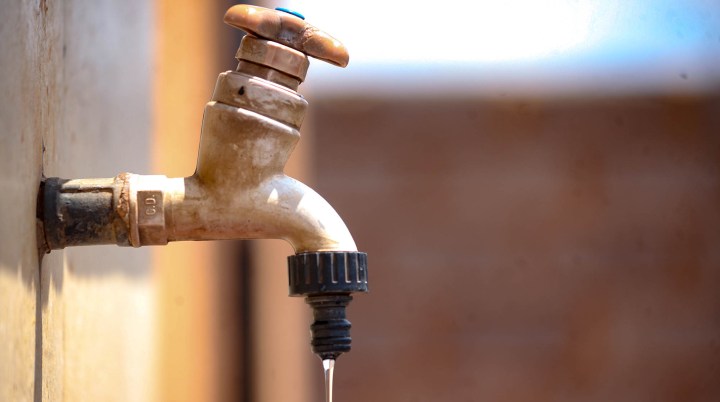
‘We are pushing and providing more water than what is requested,’ says Rand Water CEO Sipho Mosai. So what is causing Gauteng’s water restrictions then?
“The words Day Zero do not even exist in our vocab,” said Mosai, at a media briefing on Friday at Rand Water Head Office, Johannesburg South, regarding the ongoing Level 2 water supply restrictions in Gauteng over the past few weeks.
Mosai continually emphasised that there is more than enough water going into the system, explaining that year on year, Rand Water provides more water than is budgeted – which is informed by demand set by consumers, underpinned by Rand Water’s five-year infrastructure Asset Life Cycle Strategy.
For example, in the first financial quarter for 2023, the water they provided was 5% above the budget, with the budget set at 4,262 megalitres (ML) per day, and Rand Water supplying an average of 4,486 ML of water per day (up to 5,036ML daily during peak-day demand).
“There’s a perception that Rand Water is water shedding. We’re not shedding – shedding is reduction. We are not reducing; we are putting more water into the system, in contrast,” said Mosai at the briefing.
Their plant availability is at 80% and their dams are full – with the Vaal Dam at 92% – and as Mosai confidently emphasised, “we are pushing more water than planned and more than requested”.
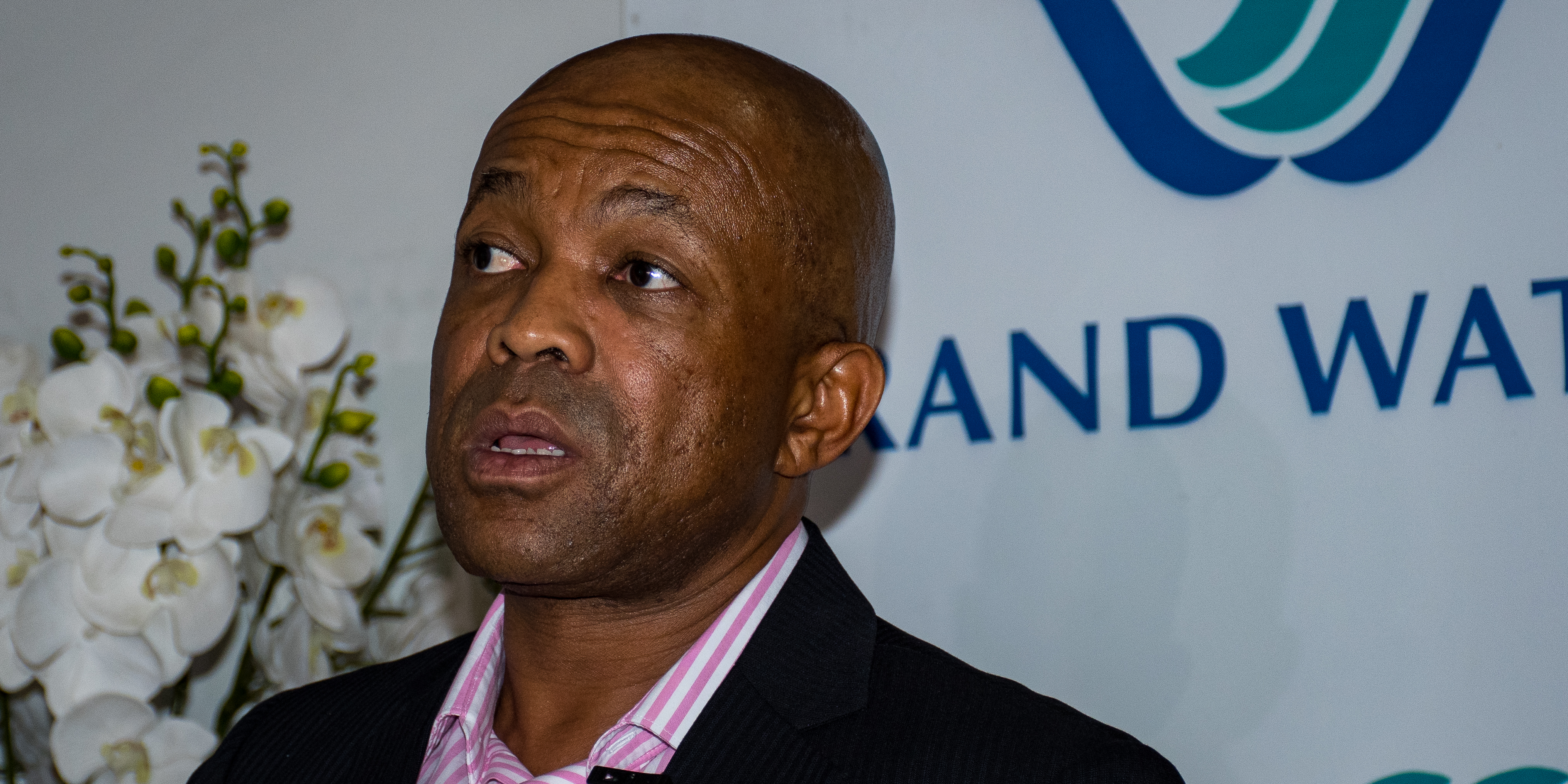
Rand Water CEO, Sipho Mosai, at a media briefing on Friday 21 October at Rand Water Head Office, Johannesburg South, regarding the ongoing level 2 water supply restrictions in Gauteng. (Photo: Julia Evans)
So what’s causing the water crisis?
If supply is not the issue, why are residents in parts of Gauteng forced to wake up in the middle of the night to bathe, chase after water tankers or stand in queues outside for tankers.
Read in Daily Maverick: “Frustrated residents of Joburg’s Coronationville battle ongoing water outages”
As illustrated in the storymap, the root cause of the water cuts is down to contentious power failures – not rolling blackouts – at two of Rand Water’s purification plants in Vereeniging, and to a power failure at Eikenhof Pump Station.
The Eikenhof system is supplied by City Power and has frequent trips, with City Power CEO Tshifularo Mashava explaining that the power trip on 29 September was as a result of Orlando switching station – it supplies Eikenhof with power – having an equipment malfunction, which is a common occurrence, given the station is more than 60-years-old.

The two primary plants, Zuikerbosch and Vereeniging Water Treatment Plants – supplied by Emfuleni Municipality and Eskom – where the recent power failures occurred, are exempted from rolling blackouts as national key points. However, Mosai said they have not been getting quality power.
Civil engineer and chief operating officer at Rand Water, Mahlomola Mehlo, said that all their water systems depend on power supply to operate, and thus the frequent power failures have affected the functioning of the water system.
Rand Water’s operations team explained that there are multiple reasons for power failures, including ageing infrastructure, weather (like wind making cables touch to create a trip, smoke from veld fires, or flooding from extreme rain).
System unstable
But they estimate the cause of the first power failure on 23 September at their Vereeniging plant to be – Eskom is yet to produce final technical reports – due to “intermittent load shedding to a large extent affecting the system”, causing the system to become unstable.
“Because the system is not designed for load shedding, just like our infrastructure,” said Simon Xaba, general manager of operations at Rand Water.
Rand Water told Daily Maverick that preliminary investigations by both Eskom and Rand Water confirmed that there was a voltage drop on the supply to Zuikerbosch Water Treatment Plant.
“The power metres reports assessments of captured voltage drops as high as 6%, which is 20% higher than 5% allowable safe voltage fluctuations,” said Rand Water spokesperson Makenosi Maroo.
Xaba said that the frequency of the system (voltage) should not be below 50%.
He explained that undervoltage from the supplier side can happen because of unstable power supply.
“It is my opinion that if you have this frequent load shedding, you are technically fiddling with the stability of power,” said Xaba, adding that the dips in power (undervoltage) are amplifying to become power trips.
Maroo said: “While the voltage levels have risen higher than what was experienced on the 29th September, they however, remain lower than normal but stable. The impact of load shedding on the system could not be ruled out.”
She added that Rand Water has been upgrading, maintaining and augmenting its infrastructure. “The infrastructure development plans for the previous, current and the outer years are a clear demonstration of Rand Water’s investment on infrastructure.”
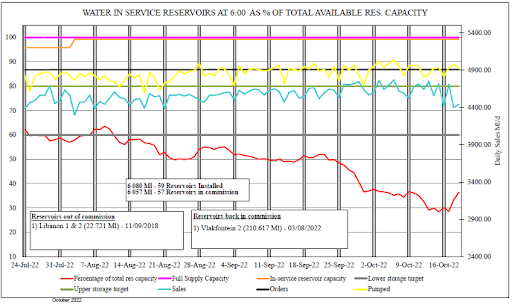
The challenge of recharging reservoirs
On top of that, rolling blackouts at their tertiary facilities – which are not exempted due to the positioning within the network – has exacerbated the challenge of recharging reservoirs.
Johannesburg Water Managing Director, Ntshavheni Mukwevho, explained that rolling blackouts only affect localised systems, like where a small pump station pumps water to a neighbourhood.
Rand Water said they have asked to be exempt from rolling blackouts to be able to stabilise the grid.
And finally, increased demand due to the heatwave – not drinking water demand, but from people using potable water for irrigating their gardens – has exacerbated the challenge of recharging reservoirs.
Currently reservoirs are struggling to maintain 30% capacity, and the optimal level is 60-90% full.
Rand Water said they have established networks with Eskom to try and respond to power trips as soon as possible, and that power issues are high on the agenda in the emergency water room recently established.
Rand Water said they have a number of initiatives to address resulting issues related to finding alternative sources for both water and energy, including building a hydropower facility to generate power.
However, this will only provide 15 megawatts, at a plant that currently uses 300 megawatts.
Climate change and variability
“We live in a world of extreme climate change and climate variability, and that calls upon us to look at how we interact with water,” said Mosai, speaking about the need to conserve the supply of water we have now, as climate variability and change increasingly put a strain on that resource.
As Our Burning Planet previously reported, we are currently in the La Niña cycle, which means a wetter climate, but are about to head into the next El Niño period, where three to four years of drought are possible – with the Vaal Dam reaching critical levels.
Rand Water told Daily Maverick that their infrastructure development plans take into consideration the change in rain cycles, which will certainly put pressure on the system.
“All kinds of infrastructure that needs to be ready at that time is either being worked on or planned to be worked on before that El Niño cycle commences,” said Rand Water.
“As with previous El Niños, engagements are held with relevant stakeholders such as industry consumers and municipalities to prepare for such activities, including educating the end users.”
Mosai explained that just because dams are full now, it doesn’t mean we should drain them. But in fact, dam storage is built to last for multiple seasons, throughout drought periods.
Mosai emphasised that they are not blaming consumers, but rather asking them to come onboard, especially during climate vulnerability during climate change.
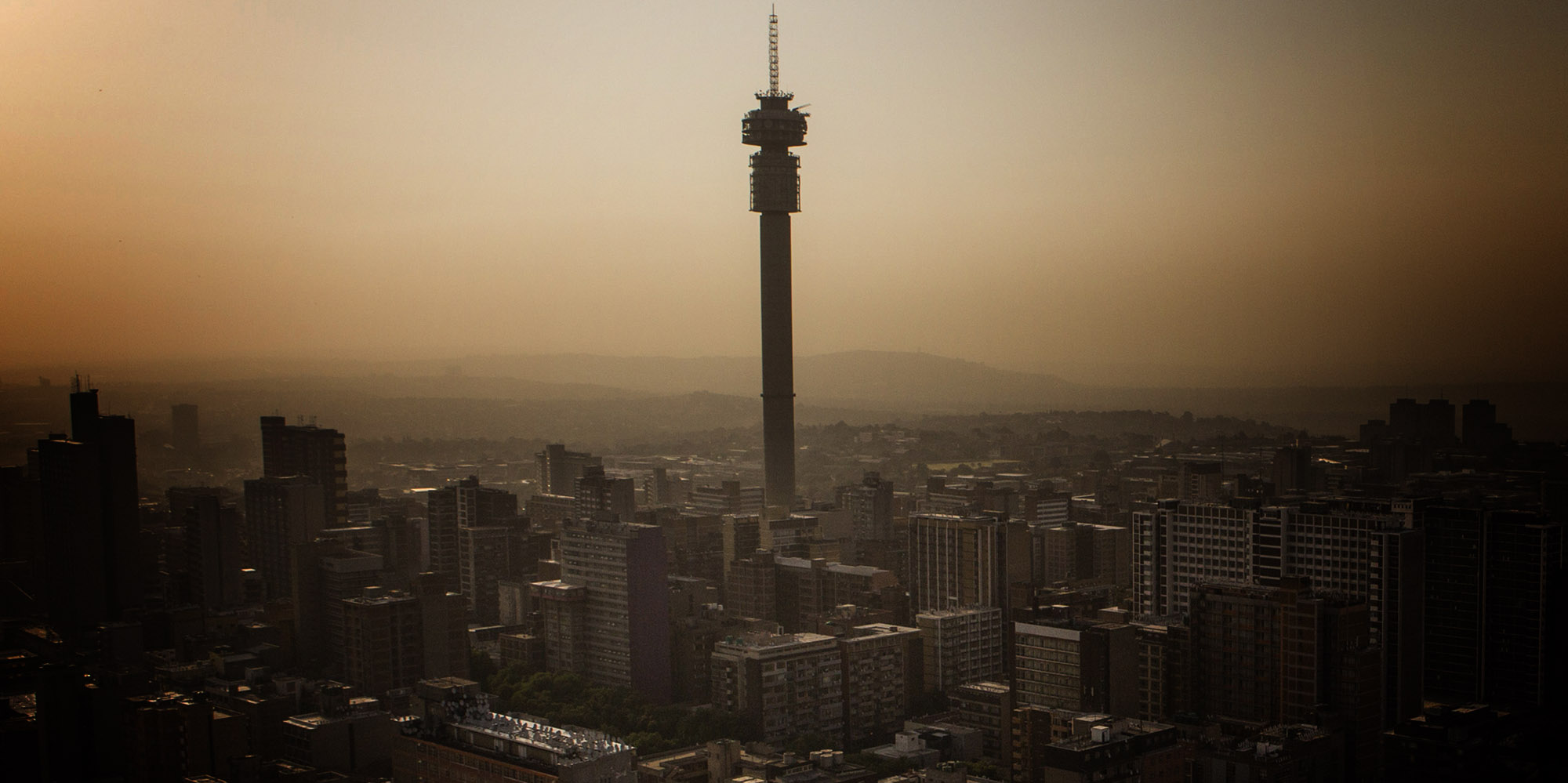
The Hillbrow Tower on the city skyline of Johannesburg. (Photo: Guillem Sartorio / Bloomberg via Getty Images)
Water conservation
“Climate change and climate variability means we have to adapt,” said Mosai, emphasising the need to conserve water as a resource.
Average water consumption in South Africa is 233 litres per capita per day, which is relatively high compared to the world average of 173 per capita per day.
In Gauteng, 305 litres per capita per day is consumed in peak demand.
Rand Water said that even without power failures that “consumers should always be encouraged to always use water sparingly as this is not a commodity the country has in abundance”.
“The availability of water in the dams should never be taken as a proverbial licence to use water at will; however it should be seen as an assurance of water until the next rains.”
Mosai stated repeatedly that they aren’t blaming customers, but rather promoting conservation practices, adding that if consumption is high, South Africa will have to build more dams, which will come out of our own tariffs.
______________________________
Visit Daily Maverick’s home page for more news, analysis and investigations
______________________________
The main issue, it seems, is that some consumers are using drinking water to fill their pools and irrigate their gardens (planted with alien invasive plants that need more water than indigenous plants, and aren’t used to dry, hot conditions).
To illustrate his point, Mosai pointed out how the slight peak in reservoir levels on the graph is as a result of rain during two days – resulting in less use of residential sprinkler systems.
When will water be restored?
Rand Water said water restrictions are a function of increased water demand and consumption, which are influenced by two elements – direct user consumption, and customer system non-revenue water.
“Water restrictions will improve when direct consumption of water is managed down,” said Rand Water. “That is bulk water customers educating the public on water conservation, and when consumer system non-revenue water is reduced. This is when municipalities ensure that system leaks are reduced and eliminated.” DM/OBP











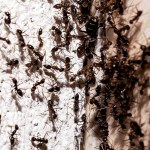









 Become an Insider
Become an Insider
28 years in the making. Just like Eskom. Parallel systems.
Important to clarify where the trouble lies. Bit too much side information in the article. Seems the core point is this: “rolling blackouts at their tertiary facilities – which are not exempted due to the positioning within the network – has exacerbated the challenge of recharging reservoirs”. If these cannot be exempted from loadshedding, then how about providing backup power to continue pumping?
All the pump stations mentioned should be national key points and managed as such. In view of the importance, there should be at least two independent sources of power supply. Security should be provided from the excess of VIP protection policemen, instead of driving around in convoys annoying the citizens. It seems like they are mostly protecting ANC members from each other, given the number of political murders in Kwazuma Natal. That shouldn’t be our problem.
We know that the next four-year drought is coming, and that the Vaal will be critically dry. Maybe we need to start building more dams, now, rather than later, please.